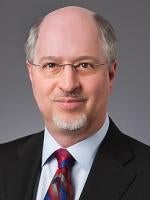I was struck on the first day of the 41st Annual J.P. Morgan Healthcare Conference by Sanjay Doddamani (CEO of UpStream Healthcare) saying that “Health is a state of independence.” A simple statement, but a very profound and interesting lens through which to view the Day One Medicare Advantage-focused company presentations. Perhaps it struck a chord in me because, in a flurry of presentations today touting patient net promoter scores (NPS), that simple statement brings to mind the feelings associated with dignity, respect, self-reliance and, perhaps most importantly, choice – concepts that are hard to quantify into a neat NPS number but which we all recognize and understand. Good health indeed does allow us the chance to be independent, while poor health, economic insufficiency and/or aging can force us into dependence, burden and obligation. I don’t have to take a scientific poll to determine which you personally would prefer.
Our healthcare system is a strange and somewhat uncomfortable mix of dependence and independence (some would call the latter fragmentation, rather than independence). The way we have allowed the healthcare system in the United States to operate means that very few people have a single integrated and coordinated healthcare solution for their needs and that often no one is fully responsible for a patient’s care and financial coordination. There are specialists and primary care physicians who, in much of the country, don’t talk or coordinate with each other; hospitals and outpatient treatment centers competing for patients; and pharmacy benefit management programs and behavioral health approaches that are often carved-out to be wholly separate from the rest of medical care. Curation – or which front door to knock on for care – is a real and serious problem.
One of the answers is primary care-led healthcare, today most successfully seen in the Medicare Advantage market. Presenting today were agilon health, Oak Street Health, Privia Health, Humana (about its proprietary CenterWell provider network), and JenCare. The first four are publicly traded companies, while JenCare is a privately owned joint venture between the owners of ChenMed and Humana. JenCare recently appointed Steve Nelson as Chief Executive Officer, following his tenure as head of DuPage Medical Group and UnitedHealthcare. JenCare is very interesting in that its physicians are generally employed in a clinic model and have to go through a 9-12 month training program before working full-time with patients (during which time they are “de-programmed from fee-for-service” medicine, as Steve said). Physician panel size is about 400 patients (not the typical fee-for-service panel of 1,500-2,000 patients), with long visits and strenuous engagement efforts to make sure patients are seen at least monthly. JenCare specifically places its centers, much like Oak Street, in care deserts, where access to healthcare is most challenging. 88% of JenCare patients have one or multiple chronic conditions, 40% are dually eligible for Medicare and Medicaid, and are taking on average 9.5 medications. Their patient’s average age is only 71, but due to the demographic facts and issues with social determinants of health, many of the patients have a much older health status.
While the fact that JenCare uses a ChenMed proprietary information system that allows risk stratification and preventive clinical workflow management, and has 31% fewer hospitalizations and 50% fewer emergency room visits than the average Medicare fee-for-service patient is impressive, the statement that really grabbed me was that patients are given their doctor’s cell phone number. It’s part of a programmatic cultural approach by the company to incorporate the values of love and trust into healthcare. It left me with a smile when Steve recounted his attempt to explain his new employer’s business model to his 86-year-old mother, resulting in his mother’s wistful response that “I wish I felt loved when I go to the doctor.”
Doctors too want to be loved. The agilon health model clearly is succeeding, moving from 17 markets in 2022 to a projected 25 markets in 2023, with a doubling of its markets between 2021 and 2023. agilon has been able to reduce hospital admissions per thousand seniors by 27% and has achieved better control of diabetes for its patients as compared to the general Medicare population. Under the agilon model, physician practices remain independent and are not acquired by agilon (unlike with Optum or health systems), nor do the doctors become employees of agilon (unlike Oak Street). agilon instead sets up long-term contractual arrangements with existing primary care practices in its markets, provides advanced data tools and analytics, management support, and care team building. Steve Sell, agilon’s CEO (who formerly was CEO of California health plan, Health Net (a subsidiary of Centene)), pointed to an interesting aspect of agilon’s physician affiliation model – the physicians already have their practices, their patients and their own governance – which allows agilon to rapidly support the improvement and growth of the practices. That varies significantly from other current models in the market that build centers, recruit employed physicians and then work to fill their centers over time (does the movie line “if you build it, they will come” ring any bells?). Oak Street and CenterWell are “green field” new center developers. This advantage for agilon not only reduces its capital acquisition costs, but it also allows their cohorts to mature earlier, with their second year cohorts of downstream risk-bearing entities showing meaningful medical expense reduction and clinical improvement. Steve Sell reported that in Michigan, within 18 months, agilon had doubled the number of its primary care physicians and members. He also reported how powerful it was for their partnering physicians to receive analytics for the first time showing how each physician’s quality and performance results compared to other physicians in the practice and to national standards. That is empowering for the physicians and can rapidly shift behavior. Steve Sell also mentioned that agilon has successfully reduced its sale cycle for new partner affiliations from about one year to about 4-6 months, which will help going forward as agilon moves into significant positive EBITDA in 2023. Finally, recognizing that health systems have been very active in acquiring physicians in the past decade, agilon inked its first partnership with a health system, Maine Health, in 2022. That potentially opens up a new area for partnerships and growth.
Oak Street Health certainly had an interesting day today. Mike Pykos, their CEO, and CFO Tim Cook gave an oddly restrained view into Oak Street’s progress to a packed audience, noting that they now had 169 centers in 21 states with 159,000 patients and estimated 2022 revenue of about $2.155 billion. Like ChenMed and JenCare, they have a center-based, senior-focused business with primary care physicians focusing on average panels of 500 patients. While Mike mentioned their progress with behavioral health and pharmacy services, I felt the presentation was somewhat flat and at odds with the earlier enthusiastic presentations by Oak Street. Sure enough, soon after the presentation ended, press reports emerged that CVS and Oak Street were in merger talks, with the rumored deal being an approximately $10 billion purchase by CVS. If that were to proceed, it would provide several benefits for CVS. First, Oak Steet has shown it’s adept by rolling out 50+ centers per year, which may well align with CVS’s plan for creating its own healthcare ecosystem. Secondly, Oak Street’s offerings could be coordinated with those of Signify to expand complimentary offerings to CVS customers. CVS also would be able to provide a vertical integration offering for Medicare Advantage, providing Aetna with the beginnings of a response to what United/Optum and Humana/CenterWell have been doing, as well as a timely response to the Walgreens/VillageMD $9 billion purchase of Summit Health, which my team helped to close this past week. The CVS purchase also provides an opportunity to more tightly align the CVS Caremark pharmacy benefit management solutions with Oak Street’s physicians and patients, much like Cigna has started to do with Evernorth’s MDLIVE and Express Scripts.
Humana’s Chief Financial Officer Susan Diamond spent part of her time at the podium today talking about Humana’s CenterWell primary care-driven, senior clinic strategy. She noted that CenterWell would benefit from Humana’s successful annual enrollment period that recently concluded, adding members in multiple geographies. Susan indicated that CenterWell will focus on supporting de novo expansion, launching new centers in new geographies. She also indicated that there would be some merger and acquisition activity, albeit focused on smaller to mid-size “tuck-in” transactions.
She also made a very, very interesting comment, saying that the rights of first refusal in the Humana payor agreements with physician groups and IPAs provide a really nice pipeline of acquisition opportunities for Humana as those physicians choose to sell their practices. What does this mean? Taking Cano Health as an example, Humana has inserted into its payor agreements with physician groups and IPAs a provision giving Humana the right to step into a sale process that a physician entity undertakes and to match (and take away) a third-party buyer’s opportunity to purchase the physician entity if Humana matches the price and material terms. In the merger and acquisition marketplace, a right of first refusal (or ROFR) is known to “chill” valuation in that fewer buyers will be willing to spend the time or money considering an acquisition if another entity, like Humana, can step in, match their terms, steal away the deal and frustrate the buyer’s ability to successfully close the transaction on which they spent months and significant transaction fees. In many instances, ROFRs are only granted if significant consideration is paid to the physician entity, because the ROFR restrains their ability to freely sell their company. Recently, with Cano, we heard rumors that CVS was interested in a possible purchase of Cano, but then backed away after looking at several factors, including possibly the Humana ROFR. Susan Diamond also separately noted that CenterWell was looking to link its primary care business with its home health business, creating a more full-service solution for seniors. These initiatives are still in the building phase, as Susan suggested that while CenterWell (which will be one of two Humana public reporting segments starting in 2023) has significant value, it will be during or after 2025 when CenterWell assets contribute materially to Humana earnings.
And then there’s Privia Health. By the numbers, it looks good. 920 care locations, 4 million patients, value-based care and risk-based reimbursement, with 112,000 Medicare Advantage and well-performing MSSP ACOs, REACH ACOs and commercial and Medicare Advantage risk. It is not buying groups, but affiliating through a management agreement/payor contracting arrangement and providing governance opportunities to physicians. Privia is also moving into value-based care arrangements with health systems, noting its new arrangements with Novant Health in North Carolina and Ohio Health in Ohio. So, what then, is Privia? The answer is that it’s a reflection of today’s healthcare system, with some fee-for-service, some ACOs and value-based care, and some risk. So, not as singularly focused on Medicare Advantage as an agilon, Oak Street or Jencare. But, it also is a physician partnership model, rather than an acquisition/control model. Physicians can retain their ownership in their own group, but also be part of something bigger. And, if it really is possible, who doesn’t want to have their cake and eat it too?
Tomorrow, we’ll take a look at the Medicare risk adjustment program changes coming down the pike, which are due to be announced in early February, and we’ll see if these changes are the light at the end of the regulatory tunnel or the light of an onrushing train. We’ll also look at interesting results from annual enrollment, what it may mean as to the possibility of a recession, and some notable things happening in the Medicaid sector, plus a few surprises.



 />i
/>i

